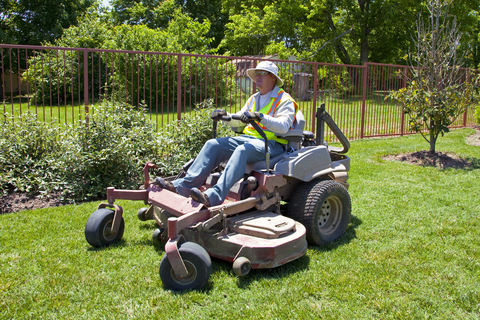With the arrival of warmer weather, homeowners begin to consider how they would like to care for their lawns during the summer. When they realize that they cannot take care of their lawns on their own and need someone to help them with trimming, watering, landscaping, and weeding their yards, people often think ask themselves what they should be paying for all of these services. A variety of different factors will influence the overall cost that people should be willing to invest in a quality lawn care service. Knowing what these factors are and how they may determine the final price required for lawn care can help homeownerschoose a reliable contractor who is capable of delivering these services.

The first factor that can determine for what price a person should be willing to pay would be the overall size of the lawn that must be maintained. A smaller yard typically requires less care than a lawn that stretches for a half acre or more and thus should not cost as much to mow, water, weed, or landscape. In fact, the website HomeWyse.com reports that the average price for mowing a yard of any size ranges from 6 cents to 31 cents per square foot. As such, the size of a person’s lawn should be one of the main determinations in how much that individual should have to pay for professional lawn care.
Another important aspect to take into consideration centers on a fair wage for the person doing the work in the yard. The Bureau of Labor Statistics reports that professional lawn care contractors earn on average a wage of $12 an hour. A homeowner should try to match the average wage in his or her area or even pay more if the quality of the contractor’s work warrants this additional compensation.
Along with a fair wage, property owners additionally should consider compensating fairly for additional services, such as tree pruning, planting, weeding, and watering. In fact, many contractors in this industry charge extra for these services to make sure that they are being paid for their additional labor. A person who owns a lawn that is full of trees, flower beds, and gardens can expect to be charged more than a person whose lawn is bare of these additional fixtures.
Contractors in this line of work also take into consideration factors like the weather, the availability of water, and even the timeframe for which the work must be done when formulating a price to charge customers. For example, if the contractor must work during extremely hot weather, that individual may charge more for his or her service. Likewise, if an area is short on water because of drought conditions, the contractor may charge less because of his or her inability to water the lawn due to water use restrictions.
If customers need the work done immediately, contractors in this industry may additionally charge more because of the short notice given before hiring them for the job. Many lawn care professionals schedule their jobs carefully to make sure they meet all of their customers’ demands. However, if a person needs a service done right away, that individual may be charged more, particularly if the contractor must call in other workers to help.
When it comes to hiring professional lawn care services, homeowners often want to know that they are paying a fair price for the services being rendered. These considerations can help them hire a contractor who will meet their lawn care needs without overcharging them. They can also adjust the price as needed by considering variables like the weather and time restrictions.
Tags: grass service, landscaping, lawn care, lawn service, summer

